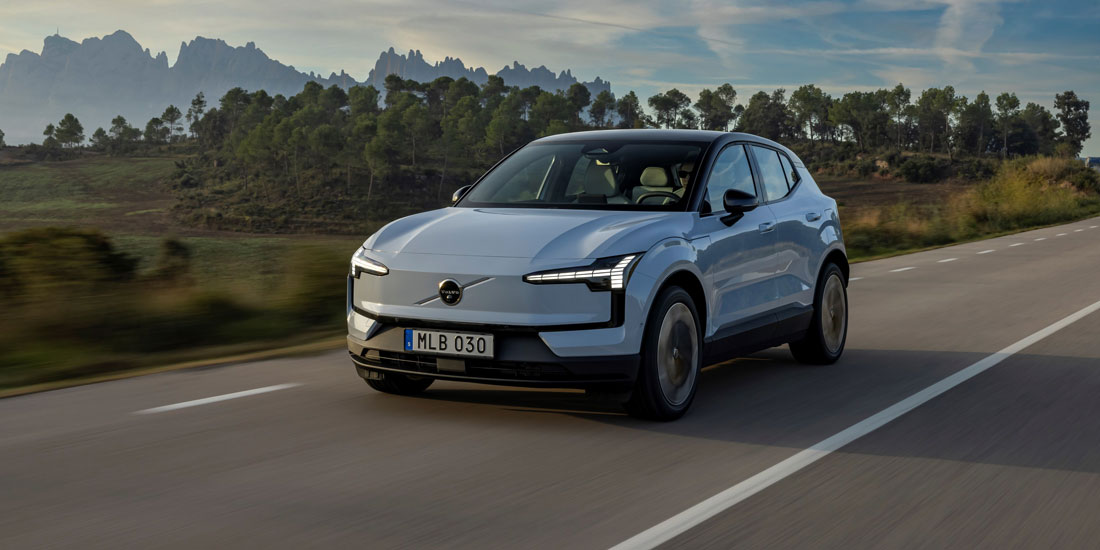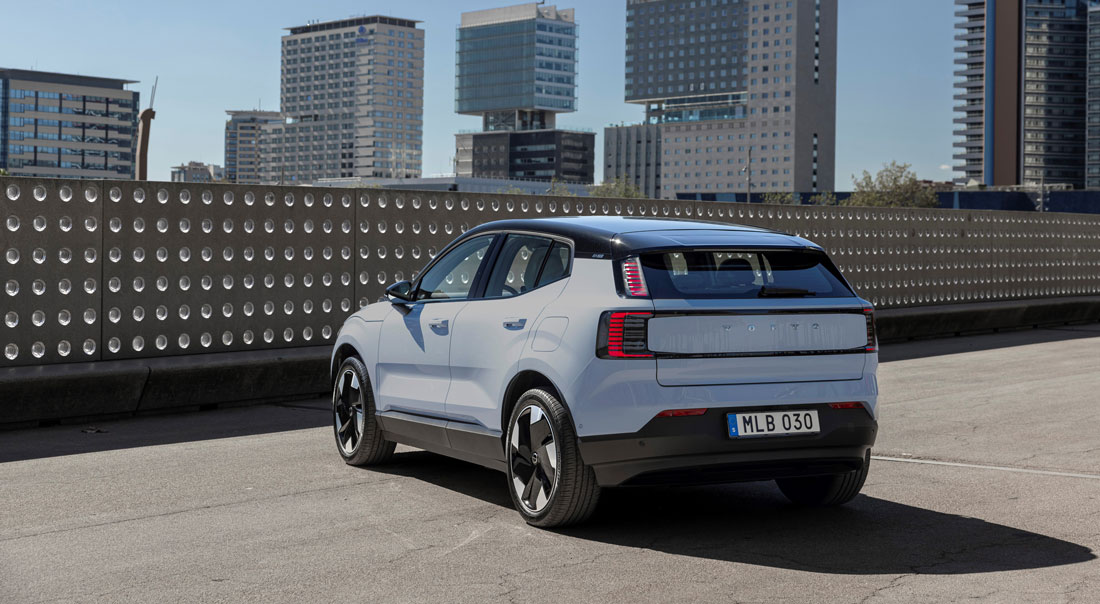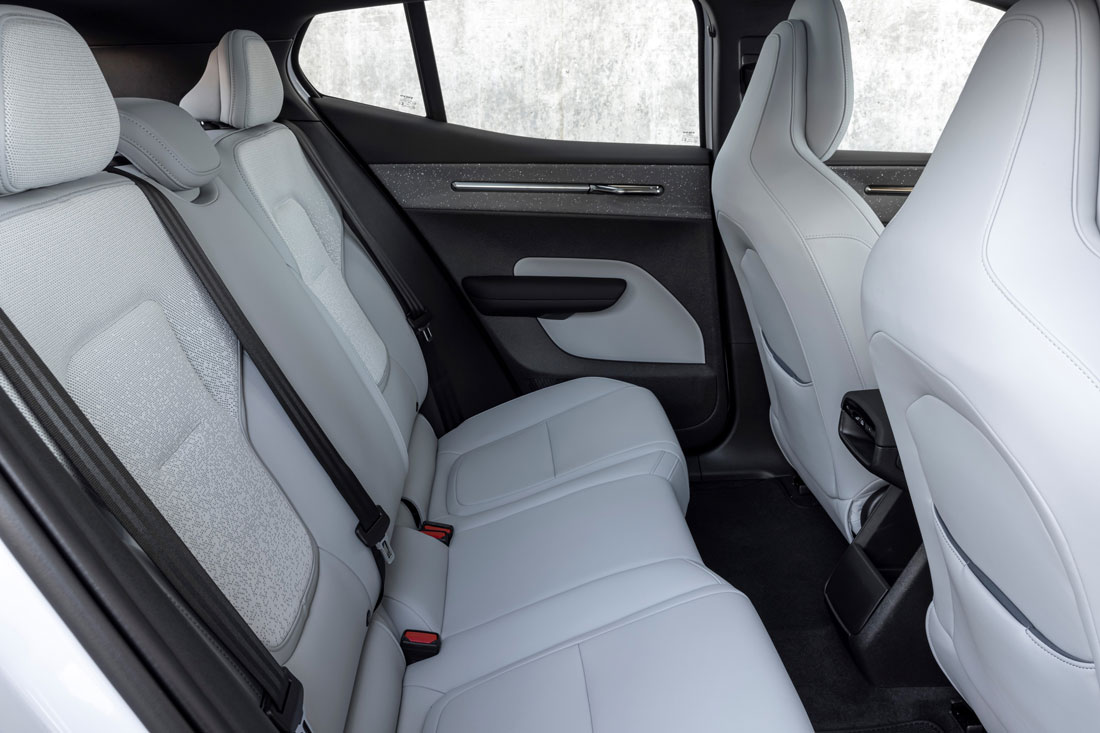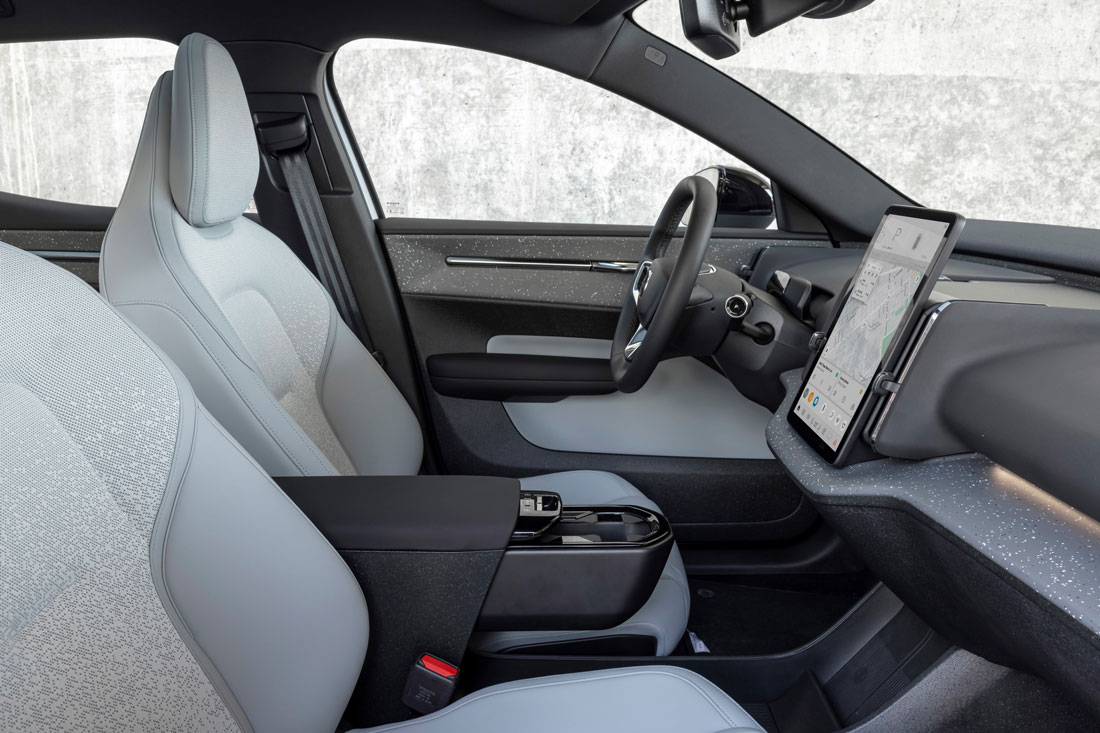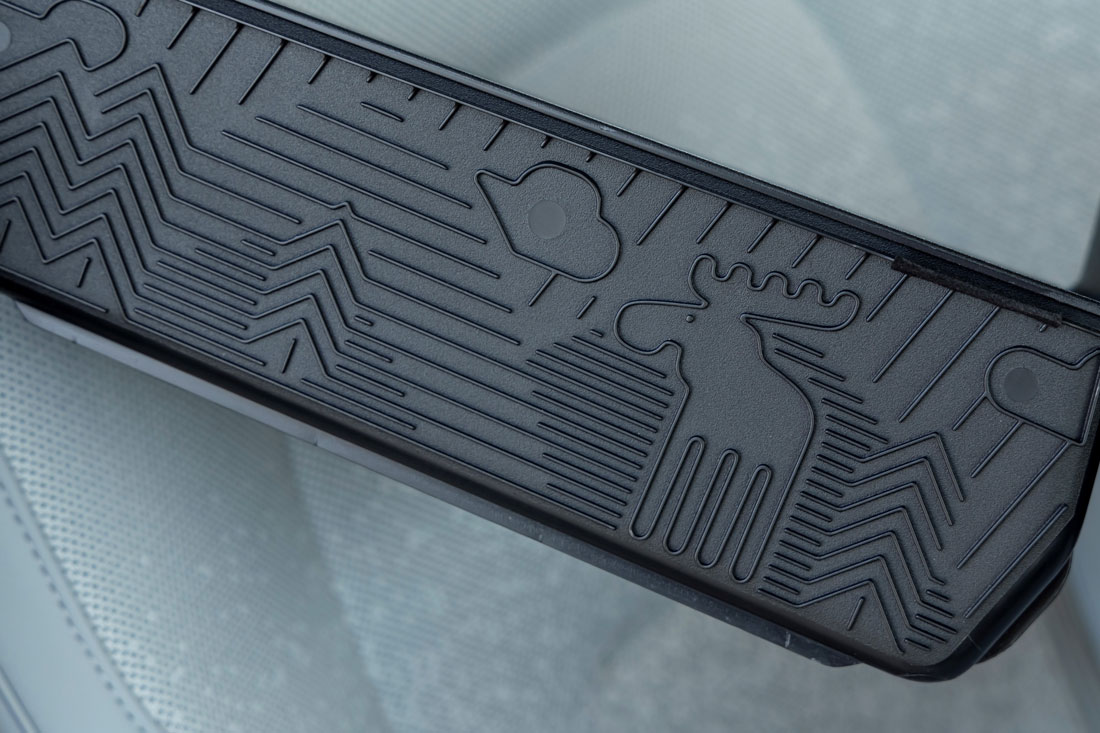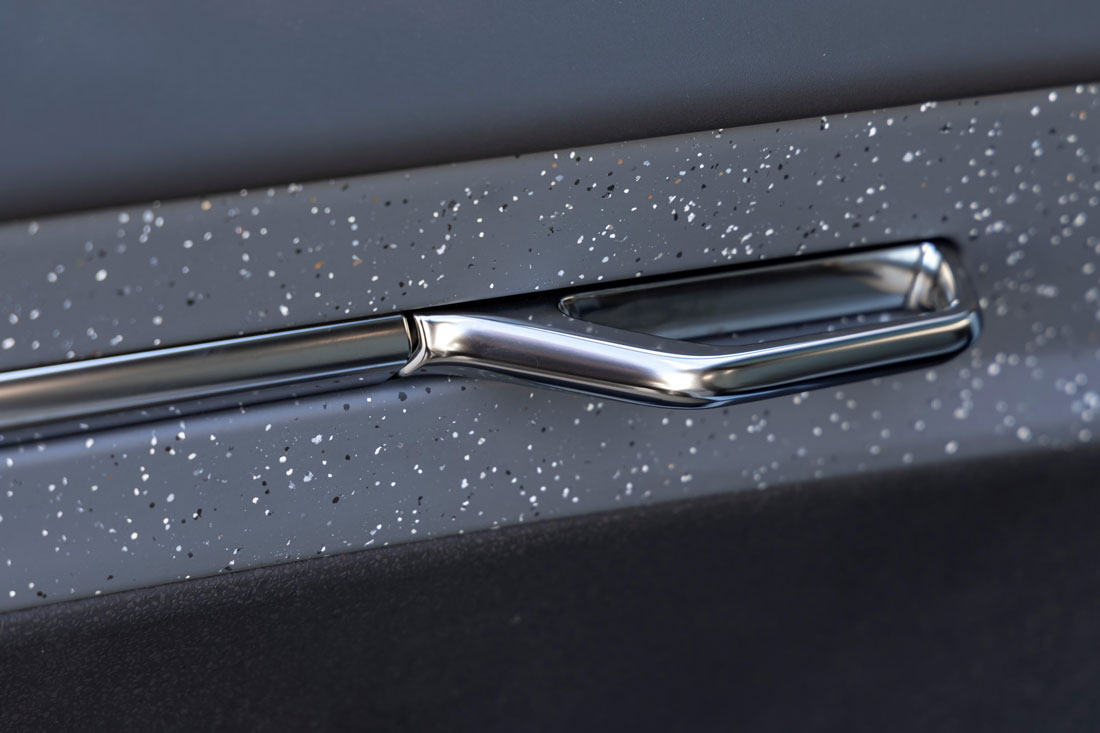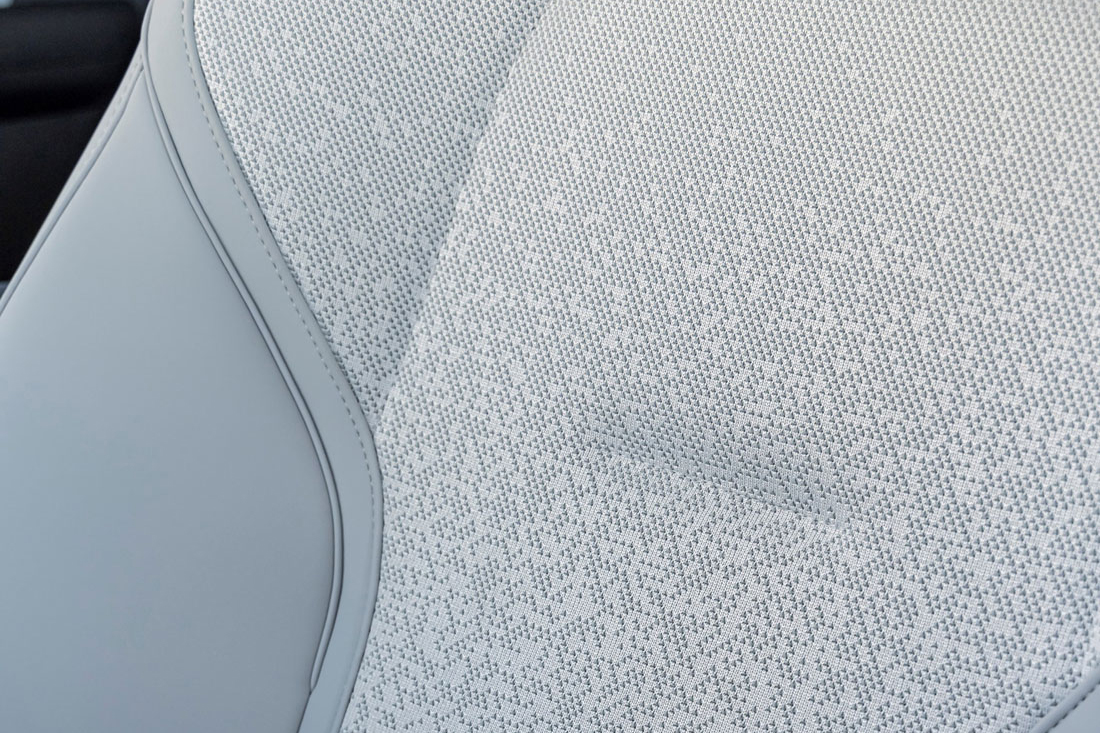There are few hours of daylight in Scandinavia this season, so Volvo chose the mild climate and brightness of Barcelona for the test drive of the EX30, Volvo’s smallest crossover with a purely electric propulsion system. We discovered it at its debut in Milan last June and reported on its genesis in the September issue of Auto&Design, but it is when seen and tested on the road that this innovative car reveals all its character.
Compact it really is, at 4.23 metres long (it is 1.84 metres wide and 1.55 metres high), even if the “size impression” is much greater, both when observing the EX30 from the outside and – even more so – inside, thanks to the typical architecture of electric cars, with a flat floor and less mechanical bulk. The exterior design undoubtedly contributes to an important, premium car look (with some features in common with its big sister the EX90) but without any visual heaviness.
On the road, it is agile and very comfortable, precise and fun to drive on curvy roads by activating the energy recovery mode. We tested both the 428 hp dual-motor version and the more ‘reasonable’ 272 hp single-engine rear-wheel-drive version; the latter is an ideal combination with the larger 69 kWh battery, with a claimed range of 475 km.
We were pleasantly surprised by the essentiality of the interior design and the dynamic test does not deny the first impression, although while driving one’s gaze continues to search for some screen behind the steering wheel and it is not very spontaneous to turn to the tablet in the centre of the dashboard to display, for example, the navigation system directions. The IP is decidedly empty and the protagonists of the cabin are the materials, very Scandinavian (four settings, which the designers call ‘rooms’: Breeze, Indigo, Mist and Pine) and unprecedented in the automotive sector, derived for example from linen fibres or Sweden-sourced pine oil, as well as – obviously – from recycling other post-consumer materials, from PET to denim fabric.
Some are comfortable, such as the wool-polyester blend fabrics covering the seats, while others are a bit basic in sight and touch but very up-to-date in their composition that does not hide the presence of recycled plastic particles, a trend that is also widespread in other fields, as witnessed by the thick soles of the most fashionable sneakers. Thus, the shiny metal door-opening handle stands out in contrast, almost as if to counterbalance such essentiality. A solid, easy-to-spot element that works in concert with a signal that warns of the possible approach of a bicycle at the moment you are about to open the door: we are still in a Volvo, protection and safety come first.

